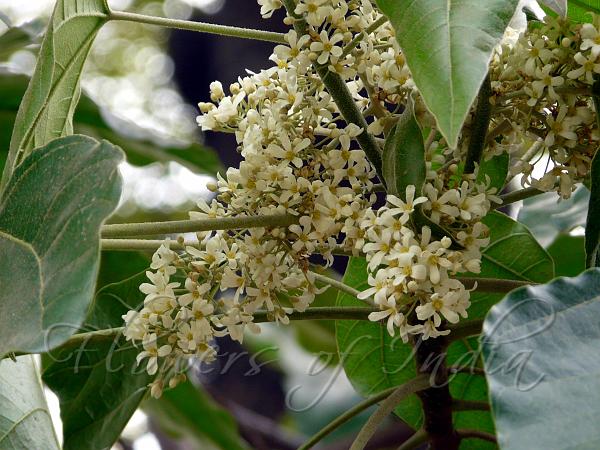|
| Candle Nut |
|

|

| File size | 779359 |
| Original date | 3/29/09 2:55 PM |
| Resolution | 2560 x 1920 |
| Flash | Flash did not fire, auto |
| Focal length | 45.2mm |
| Exposure time | 1/80s |
| Aperture | 3.6 |
| Focus Distance | |
| Metering Mode | Multi-segment |
| Camera make | Panasonic |
| Camera model | DMC-FZ18 |
| Sensor type | OneChipColorArea |
|
|
|
|
Photo: |
Botanical name: Aleurites moluccanus Family: Euphorbiaceae (Castor family)
Synonyms: Aleurites javanicus, Aleurites pentaphyllus, Aleurites trilobus, Jatropha moluccana
Synonyms: Aleurites javanicus, Aleurites pentaphyllus, Aleurites trilobus, Jatropha moluccana
Candle Nut an evergreen tree, native to Indo-Malaysia, and thrives in
moist tropical regions up to 1200 m elevation. It is a highly domesticated
tree. It grows to a height of 15–25 metres, with wide spreading or
pendulous branches. The leaves are pale green, simple and ovate, or 3-5
lobed, with a pointed tip, 10–20 cm long. Candle Nut has both male and
female flowers on the same plant. The greenish-white, fragrant flowers are
arranged in a 10–15 cm panicled cyme at the end of branches, with many
small male flowers surrounding the female flowers. The flowers are white
to creamy in color, with five free petals, oblong in shape and up to
1.3 cm long. Male flowers are longer and thinner than female flowers.
The plant typically flowers in the spring, although flowers
can be found nearly any time of year in many areas. The nut is round, 4–6
cm diameter - the seed inside has a very hard seed coat and a high oil
content, which allows its use as a candle, hence its name. In Ancient
Hawaiʻi, the nuts, named kukui were burned to provide light. The nuts were
strung in a row on a palm leaf midrib, lit one end, and burned one by one
every 15 minutes or so. Flowering: March-April.
| Identification credit: Tabish | Photographed in Delhi University, Delhi. |
• Is this flower misidentified? If yes,